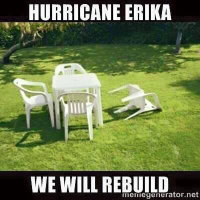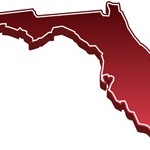 “Don’t Wait. Communicate. Make Your Emergency Plan Today” is the theme of this year’s national preparedness month. Ready.gov is encouraging Americans to be informed, make a plan, build a kit, and get involved. Over the past few years we have seen a marked increase in natural disasters, as well as disruptions in society from technological, accidental, and terrorist hazards, so Americans are taking preparation seriously. Community.FEMA.gov reports that over 23 million Americans so far have registered and committed to participate in preparedness activities. I have no doubt the true number is higher, as not all who prepare will register with the website.
“Don’t Wait. Communicate. Make Your Emergency Plan Today” is the theme of this year’s national preparedness month. Ready.gov is encouraging Americans to be informed, make a plan, build a kit, and get involved. Over the past few years we have seen a marked increase in natural disasters, as well as disruptions in society from technological, accidental, and terrorist hazards, so Americans are taking preparation seriously. Community.FEMA.gov reports that over 23 million Americans so far have registered and committed to participate in preparedness activities. I have no doubt the true number is higher, as not all who prepare will register with the website.Week 3: September 13th – 19th – Hurricane
Week 4: September 20th – 26th – Power Outage
Week 5: September 27th – 30th – Lead up to National PrepareAthon! Day (September 30th)
Because no community is completely immune to potential disaster events, all Americans should, at the very minimum, take basic protective actions. These include: plans for physical safety (and knowing whether to seek shelter or evacuate), having an emergency supply kit, having family communications and action plans, and knowing how to receive emergency alerts and critical information. From there, families and individuals should focus on plans for specific disasters that are feasible in their area.
Physical safety: What to do depends on the hazard, and where you are when it strikes. A few examples… For tornados: cover should be sought in a basement, or in the lowest level interior room that can be found, away from doors, windows, and exterior walls. For earthquakes: drop to the ground, cover your head and neck, and hold onto something sturdy if possible. If you can, it is ideal to shelter under a piece of furniture or tight against an interior wall, away from falling objects. For floods: Getting to higher ground is the main goal, which may involve evacuation.
Emergency supply kits: water (1 gallon per person per day for a minimum of three days, for drinking and sanitation); food (at least three day supply of nonperishable); supplies of medications; battery-powered or hand-crank radio and a NOAA weather radio with tone alert and extra batteries; flashlight and batteries; first aid kit; whistle to signal for help; dust mask, plastic sheeting and duct tape (for sheltering in place); moist towelettes, garbage bags and plastic ties for personal hygiene; wrench or pliers to turn off utilities; manual can opener;cell phone with chargers (inverter or solar).
When choosing foods to have at the ready, aim for high protein and higher calorie foods, while trying to avoid foods that will make you thirsty. In addition to the recommended canned goods and dried beans, be sure you have a selection of foods you could carry with you if you had to leave. Having only heavy items isn’t practical. Consider items such as meat jerky, high protein bars, peanut butter, and fish, such as salmon and tuna, in small cans or pouches. Don’t forget the bottled water.
Of course, the most critical part of any preparation is having a family plan that covers where you’ll meet and how you’ll communicate in the event of an emergency. Because family matters most.


